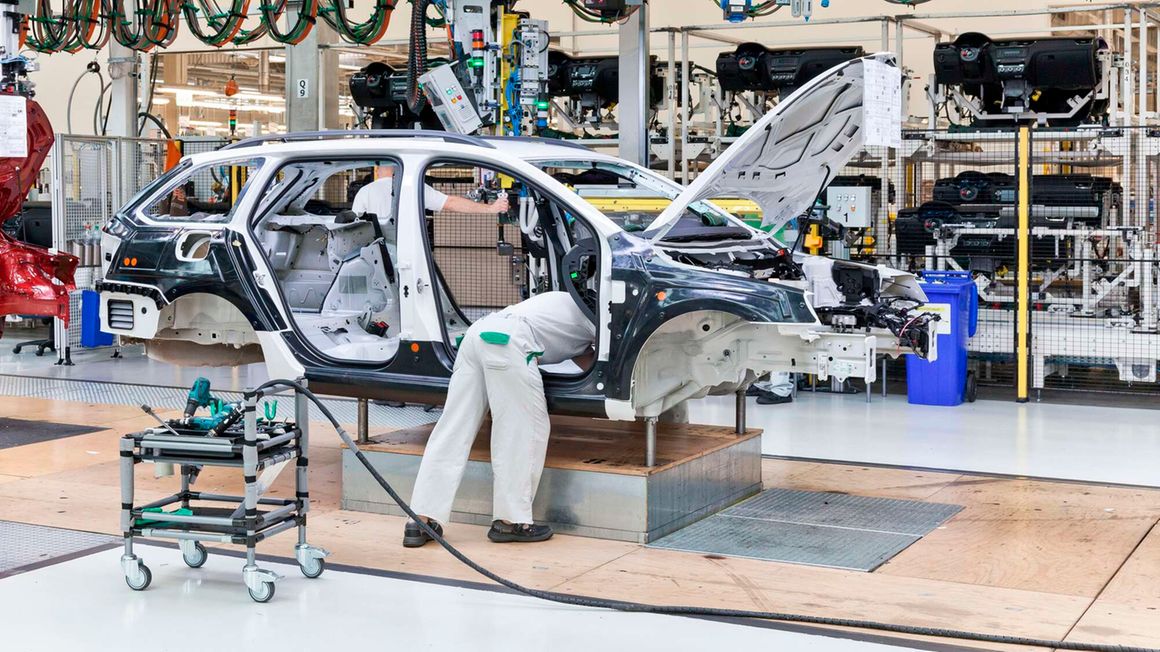How Kenya can fast-track its automotive manufacturing growth
Vehicle manufacturing in Kenya faces numerous challenges that have significant implications for its growth and long-term viability.
By addressing these challenges, which span various facets of the industry, and their interplay, Kenya can pave the way for a more robust and sustainable automotive manufacturing.
Infrastructure
The infrastructure challenges are diverse and multifaceted. First, the distances between manufacturing centres and assembly points are considerably posing logistical challenges. These distances not only lead to increased transportation costs but also result in delays in the supply chain due to longer transit times.
Secondly, the sector faces location challenges due to the lack of a manufacturer database. This is a significant hurdle that arises from the absence of a comprehensive database for manufacturers in the country.
Assemblers lack access to crucial information about who is producing what and at what capacity.
This complication further muddles the process for potential investors who need to estimate the local capacity in relation to tax incentives and to assess suitable assembly points.
The absence of accurate and up-to-date information creates obstacles in efficient decision-making and optimal site selection.
Supply chain
The challenges within the supply chain of the vehicle manufacturing industry in Kenya are substantial and complex.
Dependence on imported raw materials and components exposes the industry to an array of vulnerabilities, which can result in significant supply chain disruptions.
An automobile manufacturer's assembly line. PHOTO | SHUTTERSTOCK
These disruptions may arise from fluctuations in currency exchange rates, customs delays, and global shocks, such as geopolitical conflicts or trade disputes.
Furthermore, the high transportation costs associated with importing these materials contribute significantly to the overall manufacturing expenses.
A potential solution involves the development and utilisation of local raw materials for the production of parts and components.
By shifting toward a strategy of sourcing materials domestically or regionally, the industry can insulate itself from the risks associated with international currency fluctuations and customs delays.
This transition would not only decrease the industry's reliance on imported materials but also promote the use of local manpower, creating a positive impact on employment opportunities.
Economic factors
Currency instability and fluctuations significantly impact the cost of imported materials, leading to unpredictable manufacturing costs. High inflation rates further strain production costs, making it difficult to maintain competitive pricing.
Moreover, the economic landscape is complicated by the dynamic preferences of the main franchise holders in Kenya.
These entities often favour importing components manufactured by their source suppliers, arguing that locally produced parts do not meet their stringent standards.
Also read: Car assemblers get new tax incentives in Bill
This situation emphasises the need for more comprehensive solutions such as advocating for Kenya's accession to the UN 1958 Agreement which promotes standardisation and harmonisation in the industry. Kenya should additionally become a contracting party.
Such changes can potentially enhance the competitiveness of locally manufactured vehicle parts and components and in turn, support the in-use fleet and enable the surplus to be exported to the region and globally to other manufacturers, thereby contributing to economic growth and self-reliance.
Simultaneously, this approach would help reduce the industry's reliance on imported parts and foster a more sustainable and resilient vehicle manufacturing sector.
This shift toward local content not only bolsters the industry but also contributes to the overall economic well-being of the nation.
Regulatory challenges
Navigating the regulatory landscape within Kenya's vehicle manufacturing sector presents various challenges. The presence of a complex regulatory environment characterised by bureaucratic hurdles and ambiguous policies poses significant obstacles for potential investors looking to enter the sector.
The lack of clear guidelines and predictable procedures can deter investment and hinder the growth of the industry.
Ensuring compliance with safety and emission standards further exacerbates these challenges, especially in the absence of robust enforcement mechanisms.
Further, the absence of a streamlined approach to standards enforcement can lead to lapses in vehicle safety and emissions controls.
In some instances, the development of policies may favour specific players within the motor industry, potentially creating an uneven playing field that is not conducive to the overall well-being of the nation's transportation ecosystem.
To address these challenges and promote a more efficient and effective regulatory framework, the establishment of a central regulatory authority is crucial.
This entity would oversee, maintain records, and regulate the entire spectrum of the motor industry, spanning from parts and equipment manufacturing, vehicle assembly to vehicle imports, sales, all aspects of training, roadworthiness assessments, accident investigation, and finally, prosecution.
The current fragmentation among multiple agencies, such as the Kenya Bureau of Standards, the National Environmental Authority, the National Transport and Safety Authority, the Anti-Counterfeit Authority, and the Kenya Police Service, contributes to a disjointed approach to managing a vehicle's lifecycle. This complicates efforts to enhance road safety and overall industry quality.
The accession of the UN 1958 agreement, 1978 agreement, and the creation of a unified authority would streamline and consolidate the various laws and regulations into a coherent framework.
This approach not only reduces redundancy and inefficiency but also enables a more focused effort to mitigate road accidents, environmental pollution, consumer safety, and ensure the industry's sustainable growth.
Skilled labour and training
The shortage of skilled labour, engineers, technicians, and artisans proficient in vehicle manufacturing and technology remains a pressing challenge that impacts the growth trajectory of Kenya's vehicle manufacturing sector.
The industry's progress is impeded by the scarcity of individuals possessing the necessary skills and expertise in vehicle manufacturing and cutting-edge technology.
The absence of a sufficient number of skilled professionals hampers production efficiency and stifles innovation. Compounding this challenge is the lack of comprehensive training programmes that can address the industry's specific needs.
The absence of structured training opportunities limits the potential for cultivating a highly skilled workforce that can effectively drive the sector forward.
Encouragingly, the current shift in the government's education system to emphasise skill training and the increased allocation of slots in the Competence-Based Curriculum system represent significant steps toward enhancing the skills of students at tertiary colleges and polytechnics.
This transition equips students with practical skills that align with the demands of various industries, including vehicle manufacturing.
However, to fully capitalise on these initiatives, it's essential to establish clear and well-defined industrial attachment periods. Providing students with ample opportunities for hands-on experience within industrial settings is crucial for fostering an understanding of how machines are integrated with human skills.
Read: Used and new vehicle dealers fight over automotive policy
This practical exposure bridges the gap between theoretical knowledge and real-world applications, thereby producing graduates who are better prepared to contribute effectively to the vehicle manufacturing industry.
Furthermore, while the presence of skilled labour is a vital component, it's important to note that merely having a profusion of skilled labour might not be sufficient to sustain industrial growth.
Equipping these skilled individuals with modern tooling, project layouts, and estimated cost structures can significantly enhance their capabilities and understanding of the manufacturing process.
This practical exposure allows engineers to gain hands-on experience and a tangible feel for the intricacies of the production process.
To further support skill development and industry growth, the promotion of cottage industries could be a valuable strategy.
By fostering collaboration between established industries and the informal jua kali sector, Kenya can tap into the creativity and innovation that these smaller enterprises offer.
This collaboration would not only enhance local content and expertise but also empower small-scale manufacturers to contribute effectively to the broader industry ecosystem.
By integrating comprehensive training programmes with practical exposure to modern tools and processes, and by fostering synergies between established industries and smaller players, Kenya can effectively address the challenge of skilled labour scarcity and cultivate a workforce that propels the vehicle manufacturing sector toward sustainable growth.
Developing local supply chains and fostering domestic manufacturing of parts and components contribute to economic growth and self-reliance.
Energy supply
Inconsistent and unreliable power supply disrupts manufacturing processes and increases operational costs, potentially requiring the utilisation of alternative energy sources.
Remarkably, Kenya's energy mix is composed of approximately 90 percent green energy sources. This green energy dominance presents a promising opportunity for manufacturers seeking to align their production processes with sustainable practices.
Kenya's potential to emerge as an ideal destination for producing vehicles with minimal carbon footprints is substantial.
Read: New vehicle dealers sales drop 14pc on prices surge
The prospect of manufacturing zero-emission vehicles utilising green energy sources becomes attainable, provided that challenges related to power tariffs and energy supply stability are fully addressed.
Market size, competition, and demand
The size of the domestic market might not be large enough to support sustained vehicle manufacturing operations, leading to issues with economies of scale. Consumer preferences and demand for vehicles can be unpredictable, affecting production planning.
Competition from imported vehicles can pose a threat to the local manufacturing industry, especially if tariffs and regulations are not conducive to protecting domestic producers.
Imported second-hand vehicles have a significant market share, accounting for approximately 85 percent of the market.
This dominance can be attributed to their affordability and availability, which often overshadow locally assembled units.
At present, the local assembly line's annual production capacity stands at 14,000 units. However, this pales in comparison to the annual consumption rate of 120,000 units.
To address this imbalance, a systematic approach to capacity building is essential. Starting with parts manufacturing to enhance local content, there should be a strategic plan to incrementally shift the focus to assembling, thereby gradually reducing the dependence on fully built imported new and used units. BY BUSINESS DAILY












Post a Comment